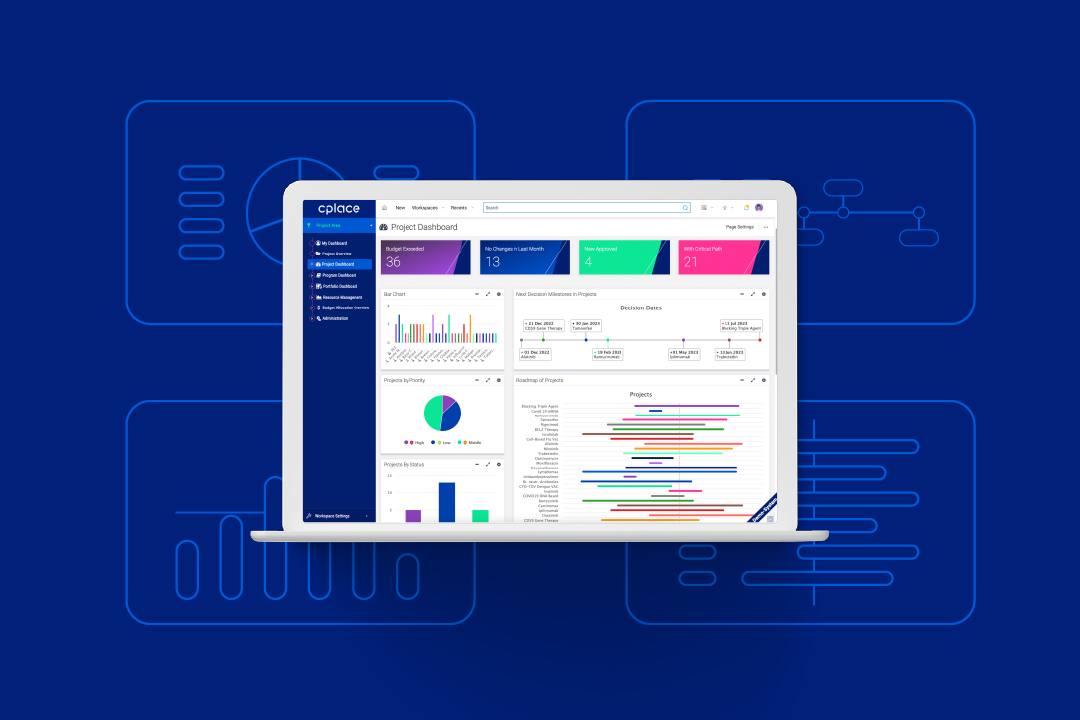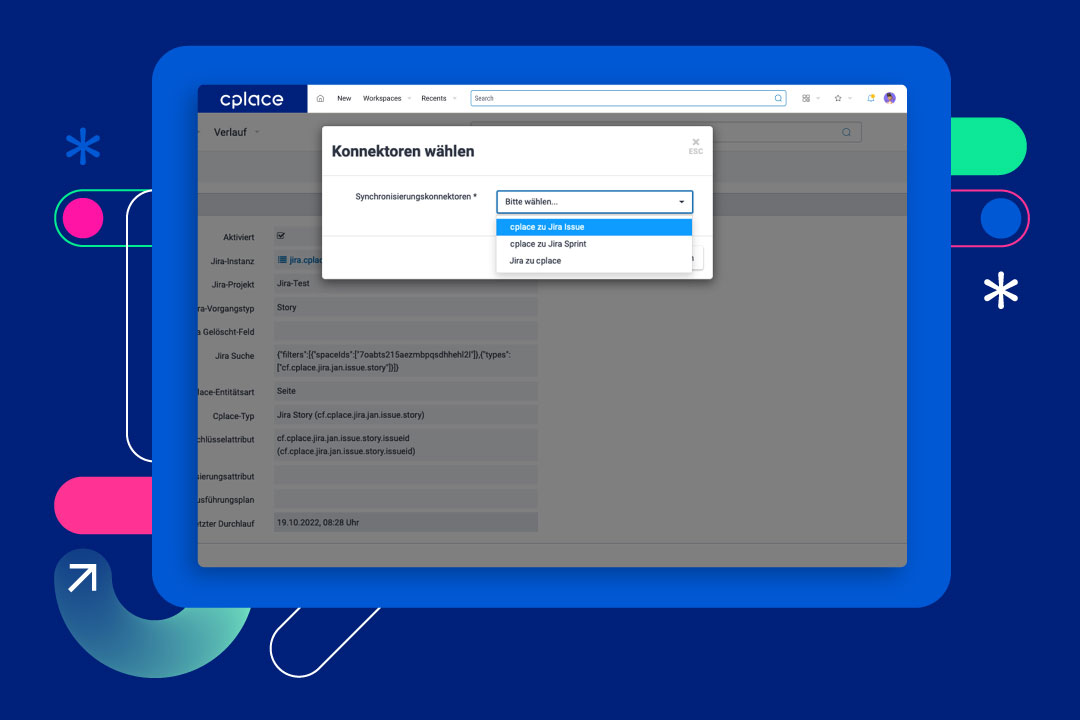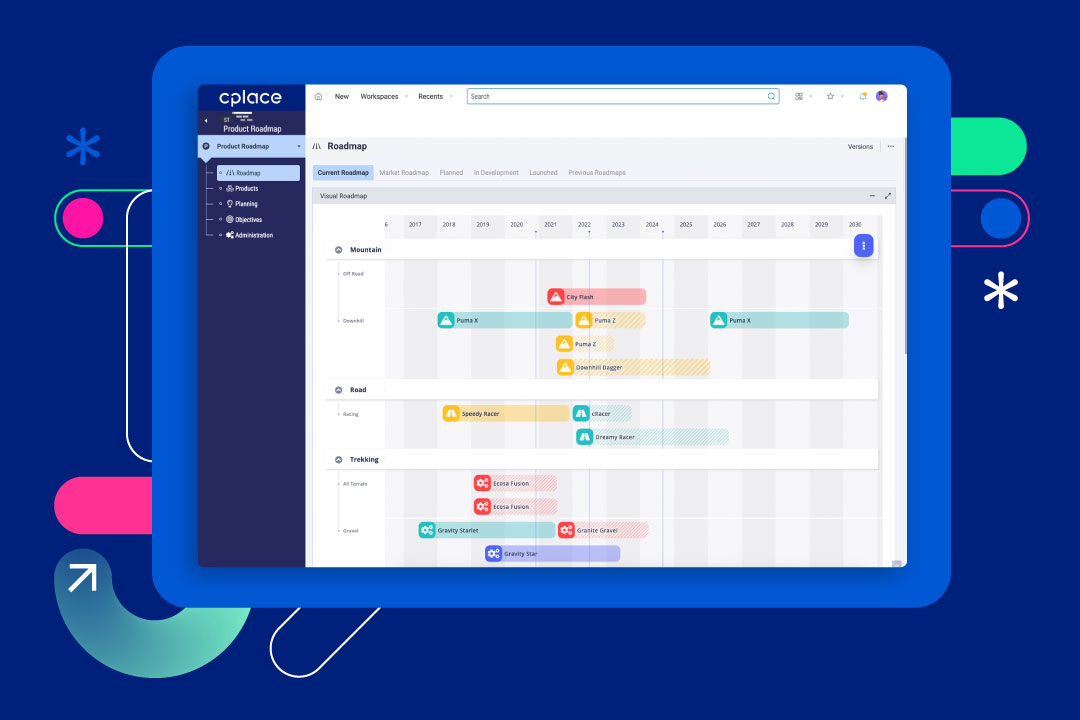Multi-project management

What is multi-project management?
Multi-project management covers all projects of an organizational unit, whereby numerous projects are carried out simultaneously and with a common pool of resources. The main objective of multi-project management, or MPM for short, is to complete projects efficiently and in a targeted manner, taking into account the available resources such as employees, financial resources and equipment. Sometimes the term project portfolio management is also used.
Successful multi-project management requires a clear concept and appropriate coordination. Even individual projects can be potentially problematic. When organizations need to handle several projects simultaneously, targeted and effective multi-project management becomes essential.
Contents
- Definition of multi-project management
- Example of multi-project management
- Difference between multi-project management and program management
- Advantages of multi-project management
- Objectives of multi-project management
- Challenges in multi-project management
- Tools and software solutions for multi-project management
- Conclusion on multi-project management
Definition of multi-project management
Multi–project management is a discipline within project management that focuses on the coordinated and effective planning, control, and monitoring of multiple projects within an organization or business unit. It involves the synchronized execution of various projects to optimize resources, minimize risks, and achieve the strategic goals of the organization. In short, it encompasses the selection, planning, control, and monitoring of the entire project landscape of a company or unit.

Example of multi-project management
A general application example of multi-project management is the introduction of a new product in a technology company. Different teams can work on different aspects of the project in parallel.
Examples of multi-project management aspects
- One team works on research.
- One team works on development.
- One team takes care of the marketing campaign.
- One team is responsible for production and quality assurance.
Using multi-project management principles, these teams can be coordinated efficiently. For example, the research department can work on the prototype while the marketing team prepares the market launch. At the same time, the production team monitors production readiness, and the quality assurance team checks the products for compliance with standards.
Multi-project management optimally utilizes resources, ensures alignment among various project components, and enables early detection of potential issues or bottlenecks. This facilitates an efficient and timely market introduction of the new product.
You can find specific application examples of global players that successfully use multi-project management in our cplace customer solutions.
Customer solutionsDifference between multi-project management and program management
Multi-project management and program management are two different approaches to coordinating and controlling activities in an organization, especially when it comes to managing multiple projects. Multi-project management focuses on the efficient execution of individual projects, while program management coordinates multiple projects as part of an overarching program to achieve strategic goals.
Multi-project management vs. program management
Multi-project management
- Focus on individual projects: In multi-project management, the focus is on the efficient management and coordination of individual projects. Each project is viewed as an independent unit.
- Targeted control: The main objective is to successfully complete each project, considering its specific requirements, timelines and resources.
- Separate responsibilities: Each project has separate owners and objectives, and resources are allocated on a project-by-project basis.
- Limited strategic focus: Multi-project management focuses mainly on the implementation of projects and less on the strategic focus that goes beyond individual projects.
Program management
- Focus on program level: In program management, several projects are bundled under one overarching goal or program.
- Coordinated management: The main objective is to ensure that the various projects within the program are coordinated and integrated to achieve the overall goals of the program.
- Shared resources and responsibilities: Resources can be shared between projects within the program. There is a shared responsibility for achieving the overall program objectives.
- Strategic alignment: Program management focuses on how the various projects collectively contribute to achieving the strategic goals of the organization.
Advantages of multi-project management
When working on several projects in parallel, multi-project management helps to maintain an overview. It is important to divide up the teams and manage them transparently using suitable multi-project management software. A project portfolio makes it easier to meet challenges and react to unexpected developments. This results in various advantages and tasks for project management:
Efficient use of resources
By coordinating and optimally allocating resources, organizations can make efficient use of their people, funding, and equipment.
Risk minimization
Multi-project management enables risks in various projects to be identified and assessed at an early stage. This facilitates the implementation of risk minimization measures.
Utilizing synergy effects
The simultaneous processing of several projects enables the identification and utilization of synergy effects, for example through shared resources or complementary project goals.
Time and cost savings
Efficient planning and control lead to a reduction in throughput times and costs. Efficiency increases can be achieved by avoiding redundancies.
Strategic alignment
Multi-project management enables projects to be better aligned with the overarching strategic goals of the organization. This promotes consistency in the implementation of the corporate strategy.
Improved control and transparency
Centralized control gives managers a better overview of the progress of all projects. This makes it easier to identify problems and implement solutions in good time.
Flexibility and adaptability
Multi-project management enables faster adaptation to changing conditions and requirements. Organizations can react flexibly to new information and align their projects accordingly.
Improved communication
A clear structure and coordination improves communication between different project teams. This promotes the exchange of information and experience.
Promoting teamwork
Teamwork is promoted by bringing together teams from different projects. This can lead to an improved exchange of knowledge and positive team dynamics.
Holistic view
Multi-project management enables a holistic view of the overall performance of an organization, as all projects are considered in relation to each other. This supports balanced decision-making.
Objectives of multi-project management
The aim of multi-project management is to effectively plan, coordinate and control several projects within an organization to achieve the organization’s strategic goals in the best possible way. Multi-project management is intended to generate efficient and successful implementation, enabling the organization to increase its overall performance.

Challenges in multi-project management
Despite its advantages, multi-project management also brings with several challenges. After all, many projects must be carried out in parallel and with the same pool of resources. Smooth operation could therefore be made more difficult by the framework conditions listed below.
Overcoming these challenges requires a clear strategy, effective communication, well-defined processes and often the support of suitable multi-project management tools.
Communication barriers
Communication between different project teams can be challenging due to different locations, time zones or communication styles.
Resource conflicts
Competition for limited resources such as employees, budgets and time can lead to conflicts between different projects.
Complexity
Managing multiple projects at the same time increases complexity, especially when projects have different requirements, goals and timelines.
Prioritization difficulties
Prioritizing projects correctly in terms of their strategic importance and their impact on the organization’s overall goals can be difficult.
Coordination problems
Effective coordination between different project teams is crucial. If this is not achieved, inconsistencies and problems can arise.
Overlaps and redundancies
There is a risk of overlaps and redundancies between projects, especially if the projects are not sufficiently coordinated.
Unclear responsibilities
Unclear competencies and responsibilities can lead to confusion and impair efficiency.
Resistance to change
Employees may show resistance to change, especially when new ways of working or processes are introduced to implement multi-project management.
Technological challenges
The introduction and use of multi-project management tools sometimes requires training and can encounter technological obstacles.
Tools and software solutions for multi-project management
There are a variety of multi-project management tools and software solutions that support organizations in efficiently planning, coordinating, and managing multiple projects. They offer different approaches and functionalities, and the choice often depends on specific requirements and preferences.
Microsoft Project
Microsoft Project ist eine weit verbreitete Microsoft Project is a widely used project management software that can also be adapted for multi-project management. It offers functions for planning, managing, and monitoring projects and resources.
Highlights of the Microsoft Project software solution
- Integration with other Microsoft tools: Seamless integration with other Microsoft products such as Excel and SharePoint facilitate data exchange and collaboration.
- Versatility: Microsoft Project is versatile and can be adapted to different project types and sizes.
- Gantt charts: The software enables the creation and visualization of Gantt charts, which makes planning and monitoring easier.

Jira
Originally developed for agile software development, Jira is also used for multi-project management. It offers functions for task tracking, progress monitoring and collaboration between different teams.
Strengths of the Jira software platform
- Agile support: Jira offers functions for agile project management methods, which is particularly beneficial for organizations with agile development processes.
- Customizability: The platform is highly customizable and can be adapted to different workflows and requirements.
- Integration with other tools: Jira can be integrated with a variety of other tools to facilitate data exchange.

cplace
cplace is a comprehensive software solution for multi-project management. It offers functions for planning, monitoring, and controlling projects. The software platform enables the integration of various aspects of project management, including resource planning, risk management, task tracking and document management.
Strengths of the cplace software solution
- Integrated platform: cplace integrates various functions, reducing the need for multiple separate tools.
- Ease of use: The user interface is designed for ease of use and facilitates collaboration between different teams.
- Adaptability: The platform is flexible and customizable and can be adapted to the specific requirements and processes of an organization within a short period of time.
- Software for large companies: cplace is suitable for large companies as it meets the highest demands in terms of security, scalability, availability, data protection and compliance.

Conclusion on multi-project management
In summary, it can be said that multi-project management is a strategic necessity for organizations to operate successfully in a dynamic environment. The smart coordination and management of multiple projects enables efficient use of resources, risk minimization and the realization of synergy effects.
Despite these advantages, challenges such as communication hurdles and complex coordination remain a focus. Choosing the right tools such as cplace, Microsoft Project or Jira is crucial to maximize the success of multi-project management. Overall, multi-project management offers the opportunity to react flexibly to changes, achieve strategic goals and increase the overall performance of an organization.